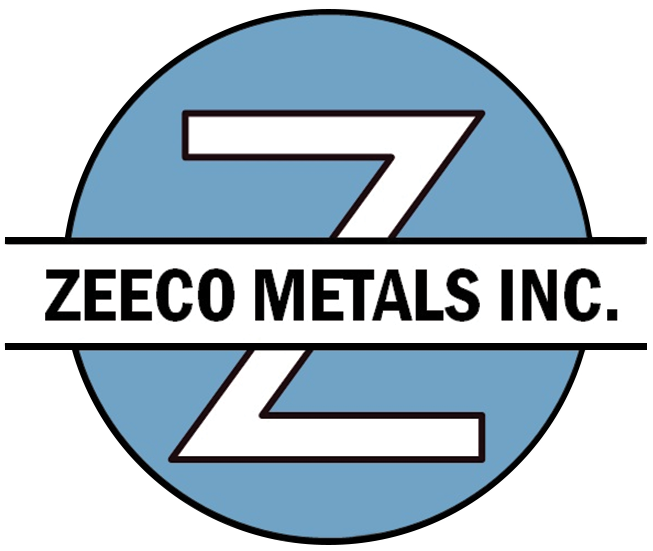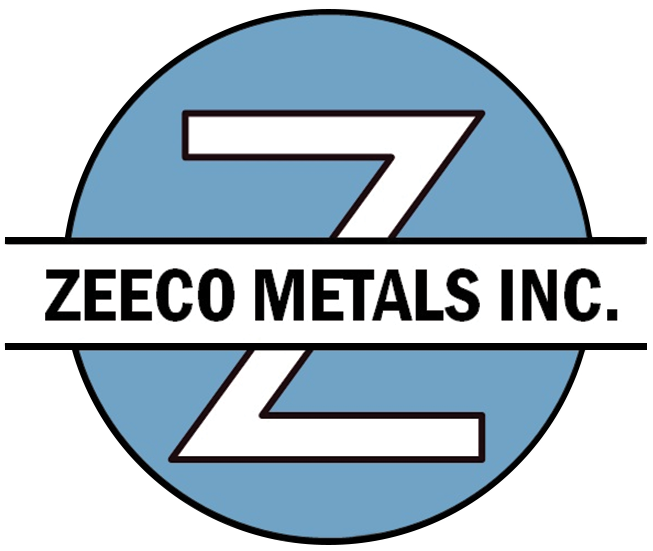Demystifying Cold Rolled Steel Prices: Factors and Market Insights
Comments Off on Demystifying Cold Rolled Steel Prices: Factors and Market InsightsNavigating the current market for cold rolled steel necessitates a comprehensive analysis of various influencing factors, including supply chain disruptions and fluctuating demand. For businesses, a thorough understanding of these market dynamics is essential for making informed decisions and optimizing cost efficiency.
Cold rolled steel costs are subject to ongoing fluctuations driven by various factors, ranging from manufacturing costs to global economic trends. This article explores recent market dynamics impacting cold rolled steel prices, focusing on manufacturing costs, supply-demand fluctuations, and global economic influences.
1. Manufacturing Costs
These are factors that influence manufacturing costs in the cold rolled steel industry:
Raw Materials
The prices of essential raw materials — such as iron ore and coking coal — vary widely. Events such as geopolitical tensions, natural disasters, or changes in production capacity can cause substantial price changes in these materials, directly affecting the cost of cold rolled steel.
Energy
The steel industry is heavily reliant on energy. Fluctuations in energy prices due to geopolitical events, policy changes, and shifts in supply and demand can cause substantial variations in production costs. As such, recent changes in natural gas and oil prices have particularly affected steel manufacturing.
Labor
Labor costs — influenced by wage trends, labor shortages, and inflation — also play a crucial role. Labor disputes or strikes in key steel-producing regions can disrupt production and increase prices.
Technological Advancements
Investments in advanced technologies can initially raise production costs, though they often lead to greater efficiency and cost savings over time. Current automation and smart manufacturing trends aim to improve processes and reduce waste.
2. Supply and Demand Dynamics
The following are factors influencing supply and demand dynamics in the cold rolled steel market:
Global Steel Production
Production levels in major steel-producing countries, notably China, significantly affect global supply. Policies to reduce pollution and production caps in these regions have recently tightened supply, leading to higher prices.
Market Demand
Economic recovery post-pandemic has surged demand in sectors such as construction and automotive. This increased demand, often outpacing supply, has driven cold rolled steel prices.
Inventory Levels
Inventory strategies among manufacturers and consumers affect price stability. Low inventory levels, particularly during high demand or supply chain disruptions, can lead to sharp price increases.
Trade Policies
Tariffs and trade restrictions influence the availability and cost of imported steel. For instance, US tariffs on steel imports have reduced the influx of cheaper foreign steel, causing domestic prices to rise.
3. Global Economic Trends
Listed below are the global economic trends impacting the cold rolled steel industry:
Economic Growth
The overall economic climate — reflected in GDP growth, inflation rates, and government fiscal policies — directly influences steel demand. During periods of robust economic growth, there is typically higher demand for steel across sectors like construction and manufacturing, which drives up prices.
Currency Exchange Rates
Fluctuations in currency values, such as a stronger US dollar, can impact the competitiveness of steel exports. When the dollar strengthens, US steel exports become more expensive for international buyers. This can reduce demand abroad and influence domestic prices as producers respond to market conditions.
Inflation Rates
Increasing inflation increases costs throughout the economy, including in steel production. As raw materials, energy, and labor prices rise, the cost of producing cold rolled steel increases — often passed on to customers through higher market prices.
4. Market Speculation and Trends
These are factors related to market dynamics and trends in the cold rolled steel sector:
Futures Markets
Activity in steel futures can result in considerable price changes. Traders’ predictions regarding projected supply and demand, influenced by current events and economic indicators, significantly impact price fluctuations.
Industry Trends
Emerging trends, such as the shift towards environmentally sustainable steel production and increased recycling efforts, are reshaping the industry. While these trends promote long-term sustainability goals, they can influence short-term production costs and market prices.
Partner With Zeeco Metals for Reliable Steel Solutions!
At Zeeco Metals, we understand the factors influencing cold rolled steel prices. Through our analysis of manufacturing costs, supply shifts, and economic trends that shape pricing, our company delivers affordable yet robust products you can depend on. We also offer a diverse range of high-quality steel products meticulously tailored to meet industry demands with reliability.
Contact us today to explore our products and discover why industry leaders consistently choose us as their preferred partner for navigating dynamic steel prices!
Hot Dipped Galvanized Steel: Exploring Its Advantages and Applications
Comments Off on Hot Dipped Galvanized Steel: Exploring Its Advantages and ApplicationsHot dipped galvanized steel has been coated with a zinc layer through a process called hot dip galvanizing. This involves immersing the steel in molten zinc, which creates a protective layer on its surface. The coating helps prevent rust and corrosion, making the steel more durable and long-lasting. It also enhances the metal’s ability to withstand harsh environmental conditions.
In this article, we will explore the benefits and applications of hot dipped galvanized steel, highlighting its suitability for specific industrial and outdoor environments.
Benefits of Hot Dipped Galvanized Steel
Here are the key benefits of utilizing hot dipped galvanized steel in different applications:
Aesthetic Appeal
The galvanized finish provides a clean appearance that can enhance the aesthetic appeal of structures. It also has a shiny, silvery look that can complement modern architectural designs and blend with various surroundings. This makes it a popular choice for visible components in construction projects.
Corrosion Resistance
The zinc coating corrodes preferentially to protect the underlying steel, preventing moisture, oxygen, and other corrosive agents from reaching the steel surface. This is especially crucial in environments prone to high humidity, salt exposure, or industrial pollutants.
Cost-Effectiveness
Although hot dipped galvanized steel may have a higher initial cost than non-coated steel, the long-term benefits outweigh the upfront investment. The reduced frequency of maintenance and lower risk of premature failure lead to significant savings over time.
Durability
The hot dip galvanizing process creates a robust coating that enhances the steel’s mechanical properties. The thickness and strength of the zinc coating ensure that the metal remains intact under heavy use and adverse conditions.
Low Maintenance
The coating effectively protects the metal from rust and corrosion, reducing the need for regular painting, inspections, or repairs. This low maintenance nature is advantageous for applications that are difficult to access or require frequent maintenance, as it saves time and labor costs.
Industries Leveraging Hot Dipped Galvanized Steel
Here are five industries that leverage this steel in their operations:
Agriculture Industry
The agriculture industry utilizes hot dipped galvanized steel for different applications, including livestock fencing, barn structures, and equipment frames. The coating protects the metal from the corrosive effects of moisture, manure, and chemicals commonly found in agricultural environments. This durability means that agricultural infrastructure remains functional and cost-effective over time.
Construction Industry
Hot dipped galvanized steel is widely used in construction for structural components such as beams, columns, and rebar. Its corrosion resistance makes it the preferred choice for indoor and outdoor applications, including exposed elements like railings and scaffolding. The durability of the hot dipped galvanized steel also helps ensure the longevity of buildings and infrastructure, which reduces maintenance costs and improves safety.
Energy Sector
This steel plays a crucial role in the energy sector, particularly in constructing utility poles, transmission towers, and pipeline supports. The steel’s resistance to harsh weather conditions makes it an ideal material for supporting energy infrastructure. Its longevity also helps maintain the reliability of energy distribution and transmission systems.
Manufacturing Industry
In manufacturing, hot dipped galvanized steel is used to produce machinery, equipment frames, and storage solutions. Its toughness and resistance to corrosion are extremely suitable for industrial settings where exposure to chemicals, moisture, and physical wear is common. Its durability also helps reduce maintenance costs and downtime associated with manufacturing equipment, ensuring smooth and efficient operations.
Transportation Industry
Hot dipped galvanized steel is used for components like bridges and guardrails in the transportation sector. The metal’s ability to withstand environmental stresses such as rain, snow, and road salt makes it suitable for these high-exposure applications. It is also used in railway tracks and signals, where its strength and resistance to wear and corrosion are crucial for safe operation.
Choose Zeeco Metals for Superior Steel Solutions
At Zeeco Metals, we offer premium-grade steel solutions for many applications. We also provide expert advice to help you select the best materials for your needs. Our commitment to exceptional client service and reliable delivery ensures that you receive the support and products you need to succeed.
Contact us today to explore our products!


